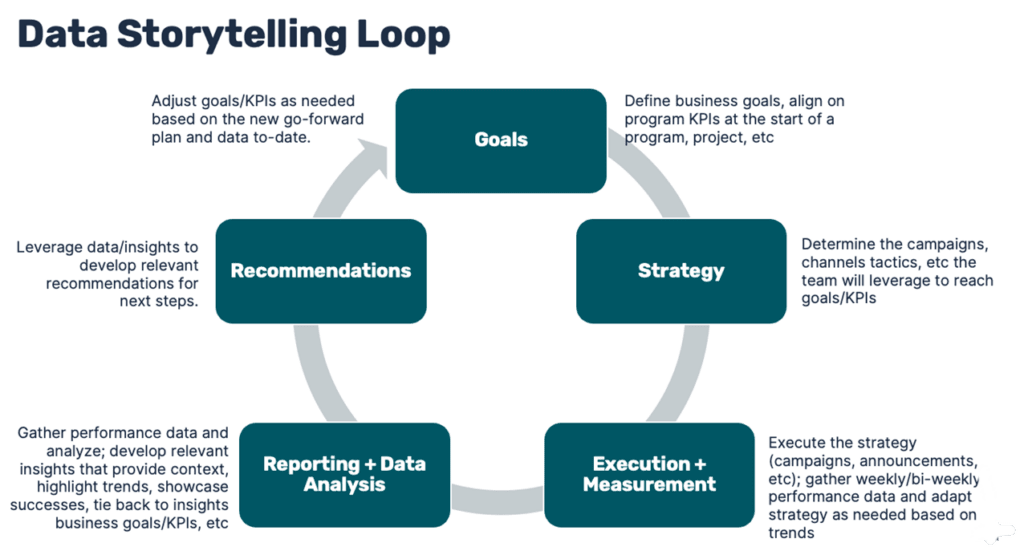In today’s digital-first world, technology has revolutionized the way we measure marketing and PR effectiveness. From the first introduction of the cookie to the development of advanced CRMs and reporting tools to the budding advancements in AI tech, we’ve exponentially expanded our abilities to track and analyze prospect behavior throughout the customer funnel.
In the B2B space, this growing wealth of numbers and knowledge has led to an increasing pressure to prove ROI. Business leaders want to know exactly how their investments in PR and marketing campaigns are driving tangible value and contributing to their bottom line. Marketers are often required to be both creatives and data scientists, leveraging their tech stacks and measurement skillsets to prove the impact of their work, even as customer journeys have become less linear and more complex.
Related Read – Leveraging Data Strategically: A Q&A with Lauren Hill, PAN VP, Head of Data & Analytics
For agencies like PAN, this shift sparked a similar evolution in our reporting methodology. Over the last decade, we’ve strategically recalibrated our approach to measurement to match our clients’ growing focus on ROI. Our data, insights, and the resulting recommendations are consistently tied back to our client’s overarching business goals, to show how we’re progressing toward key milestones and reinforce the role our partnership plays in an organization’s growth.
A key challenge of this new methodology, however, lies in determining the right metrics to measure success. Which data points support the impact stories our clients want to tell? Which metrics effectively demonstrate change? Which key performance indicators (KPIs) align to each clients’ specific goals?
Finding The Metrics That Matter
Too often, communications professionals define their success by the amount of work completed. Reports are packed with metrics like:
- Number of earned media articles secured
- Number of interviews secured
- Number of award/speaking opportunities submitted/identified
- Number of campaigns launched
- A list of optimizations or the A/B tests executed
These metrics are useful for tracking progress toward contract milestones and providing situational context, but they don’t illustrate the true value of marketing efforts. These KPIs focus on the volume of work produced, not the impact of our collaboration.
Focusing on Impact Metrics
At PAN, we’ve found that strong impact stories come together when teams right-size output metrics and zero in on KPIs that are impact- and value-centric. Think about metrics like:
- Referral traffic from earned media
- Cross-channel brand engagement
- Article readership for secured opportunities
- Key message pull through
- Engaged website sessions
- Clicks and conversions
- CPC, Cost per Conversion, CPA
- Qualified leads
- Engaged accounts
Prioritizing these KPIs helps to quickly and easily showcase value – they directly link PR and marketing efforts to our clients’ business performance and highlight how our partnership contributes to overarching pipeline.
Instead of simply reporting on the volume of work, these metrics help to preemptively answer the questions we expect our partners to ask when they look at our reports. We know they’re not just thinking about the number of media placements or campaign impressions; they want to know:
- How did this impact our brand or product awareness? (article readership, key message pull through)
- How did this contribute to our pipeline? (referral traffic, leads volume, engage accounts, etc)
- How much did this cost? How does that cost compare to the value generated? (CPC, CPA, etc)
Setting a Strong Foundation
Defining Success
In our experience, determining which metrics will best answer these questions for each client begins with goal setting. Goals set the foundation for our strategies, but they’re also the touchstone for our reporting.

Goal setting should be a dynamic, ongoing process, where KPIs and key milestones are periodically revisited and adjusted to align with changing business objectives. When setting or re-evaluating goals with a client, we ask questions like:
- What does success look like for the next quarter, year, etc.? How will we know we’ve made an impact?
- What key milestones is your team working towards? How does your organization measure those milestones? How do those connect to other department goals? How do they ladder up to your organization’s overall success?
- How can we best measure our accomplishments as partners? What does a successful partnership look like to you?
Posing these queries early and often helps us determine which metrics really matter to our clients, how we can best contribute to reaching their goals, and how we should communicate our impact on their success.
Evaluating Our Shared Tech Stack
Once we find the right mix of impact metrics, we have to figure out how to measure them. Modern marketers rely on a range of tools to gather and analyze data. Whether we’re gathering historical benchmarks or evaluating real-time performance trends, having the right tools in place ensures our reporting is robust and actionable.
When evaluating a partner’s tech stack, we strive to understand:
- What tools are in the stack? What capabilities can we leverage? Are there gaps we need to fill?
- What agency tools can we leverage to provide a more holistic picture? (Performance data, competitive landscape, industry benchmarks, etc.)
This helps us gain a clear picture of the tools at our disposal, the level of access and collaboration required to get the data we need, and any gaps we need to address to be successful.
It’s also important to remember that measurement is an ongoing process. The best stories are ones that are told with a rich layer of detail, and the depth and accuracy of those details is extremely important. Ensuring measurement is an “always on” component of programs, and that our shared tech stack supports regular analysis, empowers teams to track progress, identify optimizations early, and ultimately build strong impact stories throughout the quarter.
Highlighting Impact Over Output
Data-driven storytelling is both an art and a science. The science lies in the meticulous gathering, interpretation, and analysis of data. The art lies in where we shine the spotlight – in knowing how to communicate the data across teams to show how our work is making a difference.
In prioritizing measures of impact over measures of output, we’ve opened the door to better data-driven storytelling and more impactful business narratives. We’ve learned that, while output metrics are useful, they should never be the hero of the story. High-quality reports are centered around impact – around how our contributions and collaboration are moving the needle on our client’s business goals, driving key milestones, and proving the value of our partnership.
Explore how we’ve used data-driven storytelling to drive meaningful results:
Launching empowered work with a data-first approach to media relations
Accelerating scientific innovation through effective multi-channel strategies
Driving growth through a transformative alliance spanning paid, earned & owned channels
Harnessing timely consumer insights to drive thought leadership


